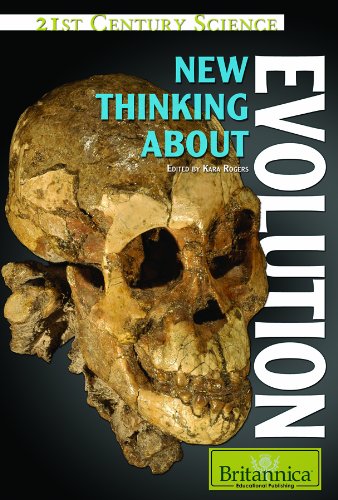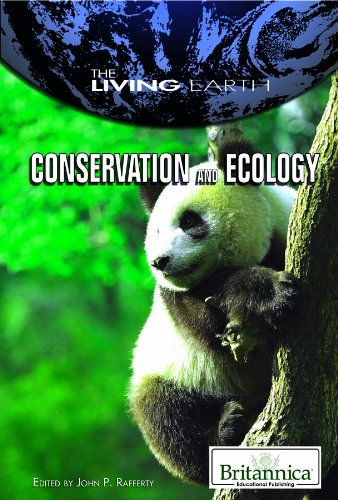-
New Thinking about Evolution
John P Rafferty
Library Binding (Rosen Education Service, Sept. 1, 2010)Remarkable as much for the insight into our earliest ancestors as the controversies it has engendered, the concept of evolution has garnered much attention since Charles Darwin first published his theory of natural selection. Notwithstanding its detractors, evolutionary science has anticipated modern genetic research and continued to illuminate mysteries about our past and our connectedness to the species around us. Detailing the evolutionary process and speciation as well as the continuing debates about evolutions inherent validity, this engrossing volume considers all aspects of this exciting field of study.
-
The Paleozoic Era: Diversification of Plant and Animal Life
John P Rafferty
Library Binding (Rosen Education Service, Sept. 1, 2010)Characterized by a surge in biodiversity and evolutionary development, the Paleozoic Era ushered in the beginnings of life as we know it. Within these pages, readers will discover the fossil and geologic evidence from this time that reveals a dynamic planet, where new species of plants and animals were constantly emerging and continents were breaking apart and reforming. While many of the species from this era are now extinct and the continents are relatively stable, remnants of this era still continue to shed much-needed light on the conditions of Earth, both past and present.
-
The Cenozoic Era: Age of Mammals
John P Rafferty
Hardcover (Rosen Education Service, Sept. 1, 2010)Its constant evolution over the millennia since its inception has made the Earth a dynamic entity, subject to numerous climactic and environmental forces that are forever changing this planet. In its most recent stage, the planet has seen an incredible diversification in plant and animal life, with the most prominent development of the Cenozoic era being the emergence of mammals. This book examines our most immediate ancestors and the geologic, geographic, and environmental factors that helped make their primacy inevitable.
-
The Mesozoic Era: Age of Dinosaurs
John P Rafferty
Library Binding (Rosen Education Service, Sept. 1, 2010)Dinosaurslarge or small, rapaciously carnivorous or timidhave captured the imaginations of children and adults alike since the first fossil discoveries mapped them onto our general body of knowledge. This book journeys to an era long before humans, where dinosaurs were once masters of land, sky, and sea. In addition to accounts of significant dinosaur species and their extinction, readers will learn about the major life forms, both plant and animal, alongside whom dinosaurs dwelled, as well as the geographical and environmental factors that affected their subsistence.
-
Geochronology, Dating, and Precambrian Time: The Beginning of the World as We Know It
John P Rafferty
Library Binding (Rosen Education Service, Sept. 1, 2010)Though it encompasses the majority of the Earths history, much about Precambrian time still remains unknown to us. With its climate extremes and unstable surfaces, Precambrian Earth hardly resembled the planet we see today. Yet for all its differences, it made the existence of future generations possible. This volume helps unlock the mysteries of prehistory by considering available geologic evidence while providing a deep dive into the finesses of geochronology.
-
Oceans and Oceanography
John P Rafferty
Library Binding (Rosen Education Service, Jan. 15, 2011)Constituting more than 70 percent of Earths surface, the worlds oceans are so vast as to remain something of an enigma to this day. Navigating these imposing seas and unlocking their secrets is the calling of oceanographers. Their research helps determine what climatic, geologic, and chemical impact oceans have on a variety of organisms. In spite of their magnitude and might, the worlds oceans are not immune to the effects of adverse human activity, such as pollution. This volume surveys this huge, but fragile, ecosystem and the individuals who help fight for the preservation of this vital resource that has critical significance to all earthly life.
-
Plate Tectonics, Volcanoes, and Earthquakes
John P Rafferty
Library Binding (Rosen Education Service, Sept. 1, 2010)The devastation wrought by earthquakes and volcanoes often obscures the fact that these destructive forces are also some of the most creative on the planetindeed, the existence of mountains and continents would scarcely be possible if natural forces were to come to a complete standstill. With detailed diagrams outlining the structure of continental and oceanic crust and the distribution of major plate motion, this book introduces readers to the range of activity that can shape or decimate an entire region. Descriptions of famous earthquakes and volcanoes help contextualize the staggering power of the Earths motion.
-
Geological Sciences
John P. Rafferty
Library Binding (Britannica Educational Pub, Aug. 15, 2011)Discusses the history of geological sciences, including geology, seismology, and the study of geomagnetism, and profiles notable Earth scientists throughout history.
-
Conservation and Ecology
John P Rafferty
Library Binding (Rosen Education Service, Jan. 15, 2011)The Earths capacity to sustain life increasingly depends on the actions of humans and our commitment to preserving the planets incredible biodiversity. Because its ecosystems are vulnerable to pollution, overuse, and numerous other damaging activities, plants and animals that rely on these regions to subsist are significantly threatened. This insightful volume examines various conservation measures, such as habitat management, that help control the extinction rates of numerous species. Tireless, incredible individuals whose work has been crucial to protecting the planet for future generations are highlighted.
-
Landforms
John P Rafferty
Library Binding (Rosen Education Service, Aug. 15, 2011)The planets natural dips and elevations, slopes and structures, stud the worlds landscapes and enrich its panoramas. However, the Earths landforms should not be viewed as anomalies in its topography; rather, they are often invaluable components of ecosystems and hold significant clues to the natural forces that fashion our environment. This comprehensive volume examines the various landformsfrom mountains to caves to glaciersthat can be found across the globe. The processes that shape each formation are also detailed within these pages.
-
Biomes and Ecosystems
John P Rafferty
Library Binding (Rosen Education Service, Jan. 15, 2011)Earths biosphere supports several unique biomes and ecosystems. Though they operate as self-contained units, these regions also operate as part of a global network, nurturing interdependence among greatly diverse plant and animal species. The evolution of these wondrous realmsboth aquatic and terrestrialand the various natural elements that distinguish them from one another are the subjects of this comprehensive volume.
-
Rats, Bats, and Xenarthrans
John P Rafferty
Library Binding (Rosen Education Service, Jan. 15, 2011)While we may often find them nestled in the corners of our attics or traversing our yards, rodents and bats are more frequently found in nature and originate in a large variety of shapes and sizes. Together they make up over half of the planets mammal species. While there are only 29 species of xenarthransan ancient line of mammals comprised of sloths, anteaters, and armadillosthey are significant players in various ecosystems, as well. This colorful volume considers the features, behaviors, and major species of these three intriguing categories of mammals.